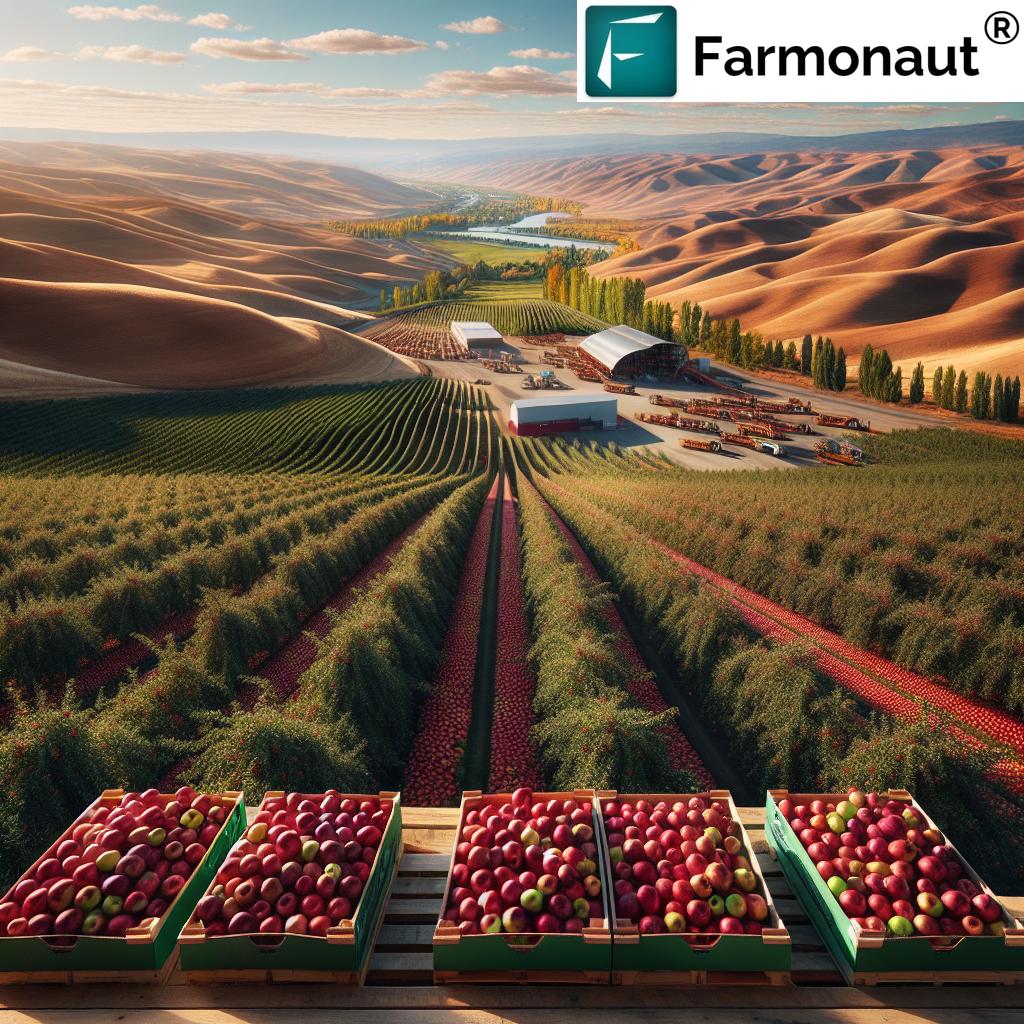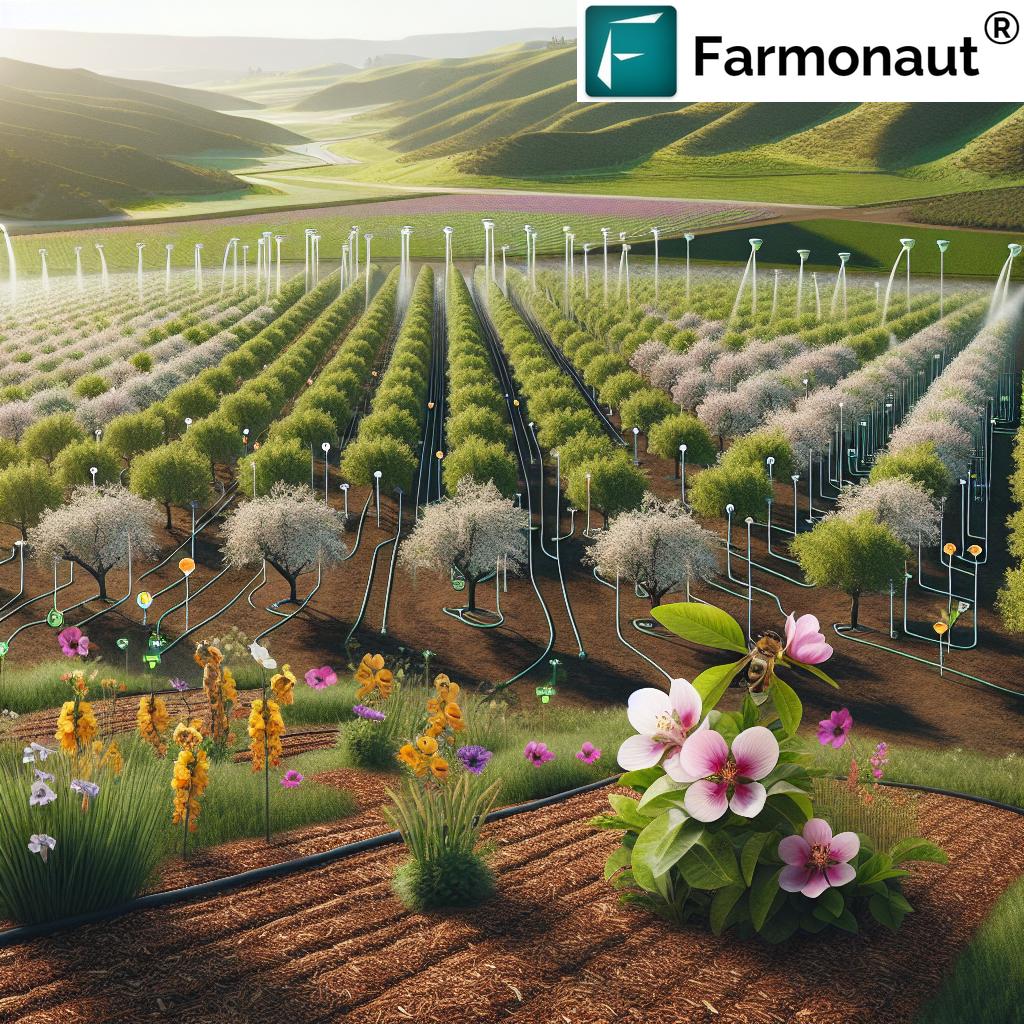2025 Agricultural Subsidies: US & India Policy Updates
Meta Description: Explore 2025 agricultural subsidies in the US & India, their evolving policy frameworks, sustainability impacts, and their role in food security and climate resilience.
“In 2025, India’s agricultural subsidies are projected to exceed $40 billion, nearly double the US’s estimated $22 billion.”
Table of Contents
- Introduction: Agricultural Subsidies in Focus
- Understanding Agricultural Subsidies
- Agricultural Subsidies US: Evolving Priorities by 2025
- Agriculture Subsidies in India: 2025 Landscape & Shifts
- Comparative Summary Table: US vs. India (2025)
- Sustainable Agriculture and 2025 Farm Subsidies: Policies, Climate, and Technology
- Technological Innovations: How Farmonaut Empowers Sustainable Agriculture
- Global Trends, Debates & Challenges in Agricultural Subsidies
- The Future of Agricultural Subsidy Programs
- Frequently Asked Questions
- Conclusion: Agricultural Subsidies, Food Security, and Climate Resilience
Introduction: Agricultural Subsidies in Focus
Agricultural subsidies remain a pivotal policy tool shaping the landscape of farming, food security, and rural development across the globe. In 2025, as climate challenges intensify and global food demands evolve, these subsidies become more critical than ever for ensuring sustainable agriculture, safeguarding farmer incomes, and stabilizing agricultural sectors.
This article deeply explores agricultural subsidies with a comparative focus on the United States and India, two of the world’s most influential agricultural economies. We analyze current policies, reforms, and future directions of agricultural subsidy programs, investigate their role in climate resilience and sustainability, and pinpoint emerging trends and innovations—from digitization to precision agriculture.
Understanding Agricultural Subsidies
Agricultural subsidies are financial supports provided by governments to farmers, agribusinesses, and related stakeholders. Their role is to stabilize agricultural production, encourage rural livelihoods, maintain affordable prices for consumers, and ensure food security in uncertain, often volatile, global markets.
What Do Agricultural Subsidies Cover?
- Direct Payments: Fixed payments to farmers to support incomes and offset production costs.
- Input Subsidies: Discounts on vital resources like fertilizers, seeds, pesticides, water, and energy.
- Price Supports: Government intervention to maintain certain crop prices above market levels.
- Crop Insurance Subsidies: Lowered insurance premiums to safeguard against natural calamities or market crashes.
- Disaster Aid: Compensation for losses caused by unpredictable weather or climate uncertainties.
The rationale behind agricultural subsidies is rooted in safeguarding farmers’ incomes, stabilizing production, and maintaining food security for the wider population, particularly amid volatile markets, cost fluctuations, and environmental stresses.
The Importance of Subsidies in Modern Agriculture
The presence of agricultural subsidies impacts every facet of the sector: from incentivizing sustainable agricultural practices to supporting the adoption of innovation and shielding rural populations from financial instability. In 2025, the scope of these subsidies continues to expand, integrating technological, environmental, and social objectives.
Agricultural Subsidies US: Evolving Priorities by 2025
In the United States, agricultural subsidies remain a cornerstone of federal farm policy. The 2023 Farm Bill and its subsequent updates set the framework for the 2025 farm subsidies landscape, focusing on balancing tradition with innovation, equity, and environmental consciousness.
Types of Agricultural Subsidy in the US
- Direct Payments: Historically central, now reformed to align more with conservation measures and income stabilization for staple crops (corn, soybeans, wheat, cotton, rice).
- Crop Insurance Subsidies: Federal government subsidizes insurance premiums, reducing risks for farmers facing unpredictable weather or market drops.
- Disaster Aid: Emergency funds for natural disasters, floods, and droughts, increasingly common as climate change intensifies.
- Environmental Incentives: Payments for climate-smart agriculture, soil conservation, carbon sequestration, and water management.
The agriculture subsidy in the US is designed to stabilize production, ensure affordable food prices, and sustain rural incomes. However, with ongoing climate and trade challenges, and debates on equity, emphasis continues to shift towards more targeted, sustainable support.
“Over 60% of US farm subsidies in 2025 will target climate-resilient crops, up from 45% in 2020.”
2023 Farm Bill Reforms Driving 2025 Trends
Recent policy reforms demanding stringent environmental compliance have radically changed the types and direction of agricultural subsidies US programs. Notably:
- More funding is directed to cover-cropping, reduced tillage, and regenerative practices.
- Precision agriculture technologies and carbon farming receive significant incentives.
- Eligibility for some subsidies is now tied to demonstrable conservation outcomes.
- Expanded support for crop insurance to minimize farmer exposure to risks associated with climate uncertainties.
With agricultural subsidies amounting to over $22 billion by 2025, legislators and policymakers aim to balance market competitiveness with environmental stewardship and social equity.
Climate-Smart Policies and Environmental Measures
Amid rapidly changing weather patterns and increasing disaster frequency, the US has shifted toward rewarding resilience and conservation efforts.
- Growing federal allocations for climate adaptation and mitigation in agriculture.
- Soil health programs and biodiversity conservation.
- Targeted subsidies for adoption of precision farming, which reduces water, fertilizer, and pesticide usage.
These policy reforms intend to reinforce the economic and ecological sustainability of American farmers.
Agriculture Subsidies in India: 2025 Landscape & Shifts
In India, agricultural subsidies are far-reaching in scale, with unique social, economic, and environmental dimensions. Over 50% of the country’s population depends on agriculture for their livelihoods—making farming support an ongoing political and humanitarian priority.
Forms of Agricultural Subsidy in India
- Fertilizer Subsidies: Representing the largest portion, these are government payments aimed at reducing costs for small and marginal farmers.
- Power and Irrigation Subsidies: Utilities like electricity for water pumping are heavily subsidized to support irrigation.
- Seed Subsidies: Schemes to make improved and hybrid seeds affordable to boost yields, resilience, and incomes.
- Price Supports: The Minimum Support Price (MSP) covers major crops like rice, wheat, pulses, and oilseeds.
- Crop Insurance Subsidies: Pradhan Mantri Fasal Bima Yojana (PMFBY) is India’s flagship program, increasingly digitalized for efficient reach and targeting.
By 2025, agriculture subsidies in India will be valued at over $40 billion, targeting affordable food, rural incomes, and climate-resilient agriculture. This vast investment shapes the nation’s approach to food security, rural development, and environmental conservation.
Key Policy Shifts: From Quantity to Quality Support
Major policy updates by 2025 include:
- Direct Benefit Transfer (DBT): Increased use of technology and Aadhaar-enabled transfer mechanisms reduces leakages and ensures subsidies reach intended farmers.
- Subsidy Rationalization: Policymakers debate balancing fertilizer subsidies with support for micro-irrigation, organic farming, climate adaptation and solar-powered pumps.
- Resource Conservation: New measures encourage crop diversification, agroforestry, and water conservation practices.
- Climate Resilience: Special incentives are introduced for climate-resilient crops and sustainable farming systems to counteract erratic monsoons and water scarcity.
These reforms signal India’s intent to build a sustainable, competitive, and climate-resilient agriculture sector—while ensuring food security and affordable pricing for consumers.
India’s 2025 Innovations in Subsidy Delivery
- Real-time monitoring and digital solutions reduce manual intervention and improve targeting.
- Climate adaptation incentives grow for practices like rainwater harvesting and reduced chemical input use.
- Push for sustainable agriculture is reinforced by linking subsidies to compliance with resource conservation measures.
Comparative Summary Table: US vs. India (2025)
| Parameter | US (Estimated 2025) | India (Estimated 2025) |
|---|---|---|
| Total Agricultural Subsidy Amount | ~$22 Billion | ~$40 Billion (₹3.3 Lakh Crore) |
| % of GDP Allocated | ~0.10% | ~1.25% |
| Major Policy Types | Direct payments, crop insurance subsidies, disaster aid, conservation incentives | Fertilizer subsidies, MSP/price supports, power/water subsidies, DBT, crop insurance |
| Major Crops Benefiting | Corn, soybeans, wheat, cotton, rice | Rice, wheat, pulses, oilseeds, sugarcane |
| Sustainability Incentives | Climate-smart agriculture, soil health programs, carbon sequestration funding, precision tech | Organic farming, micro-irrigation, renewable energy, soil health initiatives |
| Environmental Impact Focus | Reduction in GHGs, soil health improvement, sustainable water use | Resource conservation, groundwater recharge, reduced chemical usage |
| Technology Integration | Precision agriculture, digital compliance, blockchain traceability pilots | DBT platforms, digital crop insurance, AI advisories, satellite monitoring |
Sustainable Agriculture and 2025 Farm Subsidies: Policies, Climate, and Technology
Sustainable agriculture and climate resilience are at the heart of 2025 farm subsidies in both the US and India. As the global environmental crisis escalates, both countries are updating their agricultural subsidy frameworks, demanding:
- Adoption of climate-resilient crops and farming practices
- Incentives for reducing chemical input use and conserving water resources
- Stronger compliance with environmental and conservation standards
- Broader deployment of digital and satellite-based technologies for monitoring and advisory
The intersection of food security, economic stability, and environmental conservation gives rise to new opportunities, but also brings forth significant policy and implementation challenges.
Technological Innovations: How Farmonaut Empowers Sustainable Agriculture
In an era when agricultural subsidies, transparency, and sustainability are paramount, satellite-based agriculture technologies play a pivotal role in optimizing farming, monitoring environmental outcomes, and enabling evidence-based policy.
At Farmonaut, we focus on delivering affordable, scalable, and data-driven solutions for agriculture worldwide:
- Satellite-based crop monitoring (NDVI, soil & health analytics) empowers farmers, government agencies, and businesses with timely, actionable insights.
- Our AI-powered advisory systems provide real-time, field-specific weather forecasts and resource management advice to enhance sustainability under evolving climate conditions.
-
Blockchain-based traceability solutions reinforce subsidy integrity and transparency by tracking farm inputs and outputs.
Check Farmonaut’s traceability product for authenticated agricultural supply chains. - With fleet and resource management tools, we enable large-scale farms and agribusinesses to optimize logistics and machinery use, reducing costs and emissions. Learn more about the benefits of Farmonaut’s fleet management system.
- Our crop loan and insurance verification service supports financial institutions in reducing risks and fraud—see Farmonaut crop loan and insurance product.
By leveraging satellite analytics, AI, and blockchain, our platform aligns with the goals of modern subsidy programs: precise subsidy targeting, fraud reduction, operational efficiency, and sustainable, climate-smart food production.
For API access or integration with your business or policy system, explore our Farmonaut’s Satellite Agriculture API.
Developers can view documentation on API Developer Docs.
To cultivate climate resilience and improved food security at scale, see how our carbon footprinting product enables environmental compliance and sustainable subsidy implementation.
For organizations requiring advanced, large-area digital field management, our large-scale farm management platform delivers remote oversight, real-time reporting, and strategic analysis for subsidy targeting and compliance.
Global Trends, Debates & Challenges in Agricultural Subsidies
Emerging Policy Shifts and International Trade Implications
Around the world, 2025 farm subsidies are being shaped by international agreements, trade rules, and climate goals. Major global trends include:
- Pressure from the World Trade Organization (WTO) to reduce market-distorting subsidies and strengthen “green box” (climate and sustainability-friendly) support.
- Cross-border debates around balancing food sovereignty, export competitiveness, and equity for smallholder farmers.
- Rising scrutiny on ineffective or misdirected subsidies—calls for greater transparency and digital traceability.
- Investment in digital infrastructure—connectivity, digital banking, and mobile platforms to deliver targeted subsidies in challenging topographies.
Key Challenges Facing 2025 Farm Subsidies
- Targeting and Inclusion: Ensuring crops, regions, and vulnerable groups (like smallholders, women) receive equitable support.
- Reducing Environmental Harm: Phasing out subsidies that incentivize overuse of water, fertilizer, or energy risking ecological damage.
- Climatic Uncertainty: Creating flexible mechanisms that adapt to volatile weather, unpredictable disasters, and long-term environmental change.
- Data Integration and Real-Time Monitoring: Making use of advanced satellite and digital technologies (like those from Farmonaut) for tracking outcomes, reducing fraud, and optimizing resource use.
- Political and Social Sensitivity: Many rural communities are deeply dependent on subsidies; sudden withdrawal or reallocation can have serious social and economic impacts.
The Future of Agricultural Subsidy Programs
Key Takeaways and the Path Forward
- Integration of Environment and Economy: Subsidies are increasingly designed to balance profitability with ecological sustainability and rural development.
- Digital, Data-Driven Approaches: The next generation of agricultural support will be defined by real-time data analytics, precision targeting, and transparent digital transactions.
- Incentivizing Climate Resilience and Sustainability: Future subsidies in both India and the US prioritize soil health, water conservation, carbon sequestration, and biodiversity protection.
- Policy Labs and Pilots: Governments will continue to test direct transfers, new insurance models, and digital compliance mechanisms for improved efficiency.
- Stakeholder Collaboration: The dynamic between public policy, technology firms (like Farmonaut), research bodies, and farmer organizations will drive innovation and responsible subsidy reform.
- Transparency and Fraud Reduction: Modern systems will leverage blockchain, satellite monitoring, and end-to-end digital traceability for trust and compliance.
Ultimately, agricultural subsidies must evolve into flexible, targeted, and sustainable instruments for ensuring global food security in the face of environmental and economic uncertainties. With the right approaches, agriculture can become both climate-smart and inclusive.
Frequently Asked Questions
-
Q: What is an agricultural subsidy?
A: It is a form of financial support provided by governments to farmers, intended to stabilize farm incomes, encourage production, or support affordable food prices for consumers. -
Q: Why are agricultural subsidies important in 2025?
A: In 2025, they are crucial for ensuring food security, enabling climate resilience, supporting rural incomes, and driving adoption of sustainable farming practices in the face of increasing global uncertainties. -
Q: How do the US and India differ in their agricultural subsidy policies?
A: The US focuses on direct payments, crop insurance, and climate-smart incentives, while India prioritizes fertilizer subsidies, MSP, irrigation, digital DBT, and adaptation to climate variability. -
Q: What role does technology play in modern agricultural subsidies?
A: Technologies such as satellite monitoring, AI advisories, blockchain, and digital delivery platforms are making subsidies more transparent, targeted, and efficient. -
Q: How do agricultural subsidies impact climate change and sustainability?
A: By redirecting support towards sustainable practices and climate-resilient crops, subsidies can reduce greenhouse gas emissions, conserve water and soil, and promote ecological balance. -
Q: Where can I access Farmonaut’s agricultural monitoring or advisory services?
A: Our services are available via web/browser app, Android, iOS, and API, making satellite-powered insights accessible to all.
Conclusion: Agricultural Subsidies, Food Security, and Climate Resilience
As we enter 2025, agricultural subsidies in both the United States and India—the world’s two agricultural giants—sit at a crucial intersection of economic, social, and environmental goals. Their strategic design and implementation will shape the future of farming, food security, and climate adaptation across the globe.
The transition toward sustainability, digital innovation, climate resilience, and transparency is driven by the evolving mandate to ensure affordable food, maintain rural incomes, and safeguard our natural resources. Technology platforms and satellite data, such as those offered by Farmonaut, empower policymakers, businesses, and farmers alike to pursue these objectives in more data-driven, accessible, and responsible ways.
Ultimately, well-balanced, forward-looking agricultural subsidy policies are the backbone of a sustainable and resilient agricultural sector—one that can withstand market stresses, adapt to environmental shocks, and meet the needs of diverse societies. The challenge for 2025 and beyond is to craft subsidy frameworks that are inclusive, efficient, and aligned with the urgent imperative of climate action.
Explore our platform, leverage the Farmonaut app, and drive the next wave of sustainable and profitable agriculture—empowering your farm, business, or institution with the best of satellite, AI, and blockchain technology.











